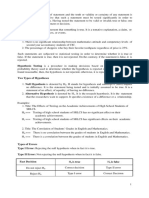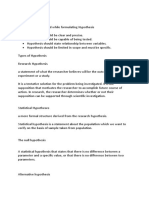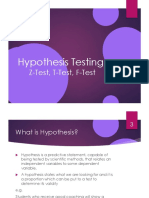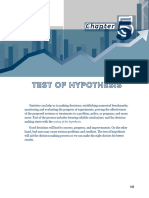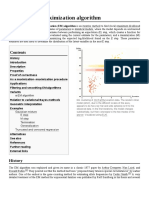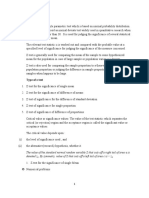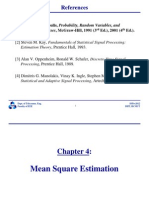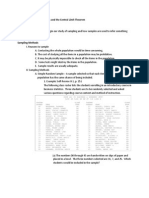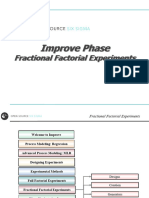0% found this document useful (0 votes)
27 views5 pagesDS Module 04
This document covers hypothesis testing, including the definitions of null and alternative hypotheses, Type I and Type II errors, and the differences between one-tailed and two-tailed tests. It also explains when to use Z-tests versus t-tests and introduces the goodness of fit test, detailing its purpose and methodology. Key concepts include the significance levels, the Chi-square statistic, and the importance of sample size and population standard deviation in selecting appropriate tests.
Uploaded by
Adiba KhanCopyright
© © All Rights Reserved
We take content rights seriously. If you suspect this is your content, claim it here.
Available Formats
Download as PDF, TXT or read online on Scribd
0% found this document useful (0 votes)
27 views5 pagesDS Module 04
This document covers hypothesis testing, including the definitions of null and alternative hypotheses, Type I and Type II errors, and the differences between one-tailed and two-tailed tests. It also explains when to use Z-tests versus t-tests and introduces the goodness of fit test, detailing its purpose and methodology. Key concepts include the significance levels, the Chi-square statistic, and the importance of sample size and population standard deviation in selecting appropriate tests.
Uploaded by
Adiba KhanCopyright
© © All Rights Reserved
We take content rights seriously. If you suspect this is your content, claim it here.
Available Formats
Download as PDF, TXT or read online on Scribd
/ 5











